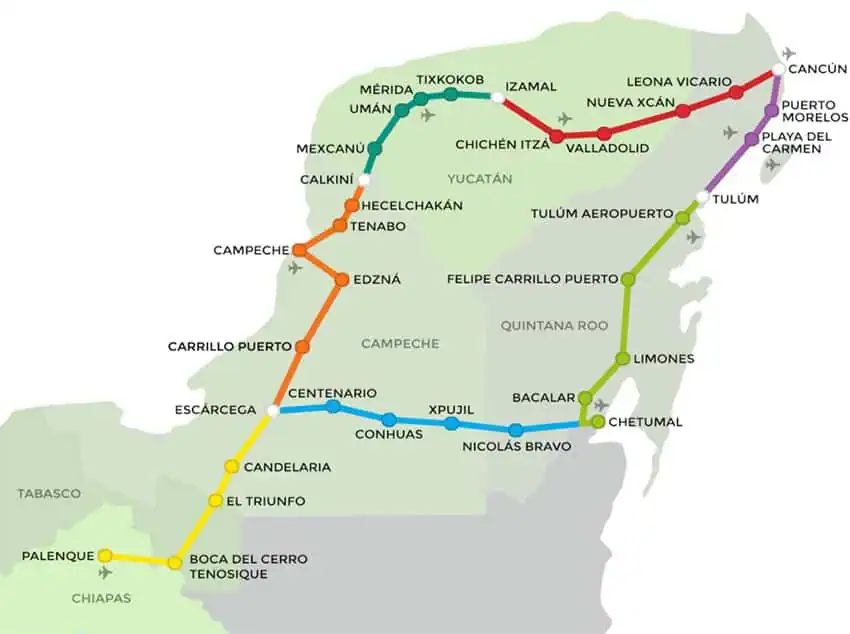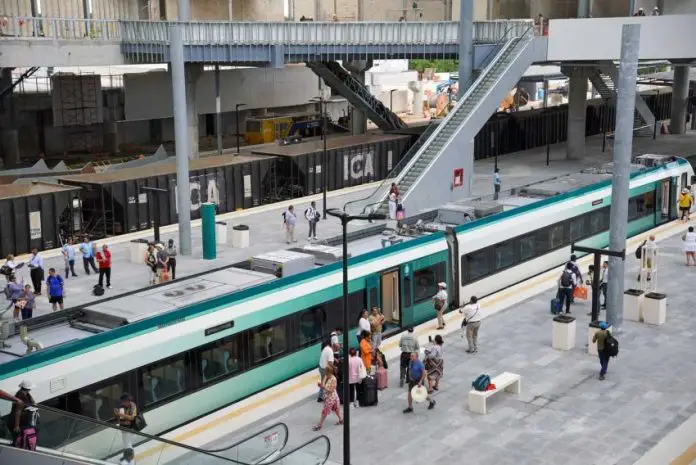President Andrés Manuel López Obrador is expected to inaugurate the remaining sections of the 1,554-kilometer Maya Train railroad in the state of Quintana Roo in early September, but one local business leader doesn’t anticipate the project being completed until the middle of next year.
With only days until the president’s scheduled visit, questions mount about whether the train is “on track.”

On Aug. 19, Quintana Roo Governor Mara Lezama confirmed that President López Obrador will be inaugurating the finished project in early September.
“The president will inaugurate all 500 kilometers of the Maya Train in Quintana Roo as well as our two remaining train stations,” Lezama said, adding that her annual governance report would be rescheduled after Sept. 5.
López Obrador recently targeted Sept. 15 as the date the railroad would be completed, hoping the ambitious project would be fully operational before he leaves office on Oct. 1.
That’s unlikely to happen, says businessman Josué Osmani Palomo in an interview with the newspaper El Economista. He predicts the train won’t be fully ready until mid-2025.

The northern part of section 5 was finished earlier this year, but the southern part of section 5 and sections 6 and 7 of the Maya Train are only about 65-70% complete, Palomo said, and added that the train stations are just 50% ready.
The three sections connect Quintana Roo coastal resort cities Playa del Carmen and Tulum, and link Tulum with Chetumal farther south before continuing west across the Yucatán Peninsula to Escárcega.
Palomo — a member of Mexico’s Construction Industry Chamber (CMIC) and the treasurer of the Mexican Employers Federation’s Chetumal office — blames the federal government for failing to consult with local members of the CMIC who have intimate knowledge of the region.
As an example, Palomo pointed to the severe flooding that recently plagued the town of Bacalar. Palomo told El Economista that the area is prone to flooding but the decision to place the tracks on a berm essentially created a dike, which exacerbated the flooding.
#TrenMaya | #Bacalar “Yo perdí todo, mi casa tenía paneles solares, perdí mi sala, mi refrigerador, una televisión pequeña; todo se perdió, las gallinas se fueron con el agua y el presidente municipal no ha hecho nada”, narra José Antonio, afectado por las inundaciones. pic.twitter.com/m6F4ucnKzH
— Iván Cadena (@IvanCadena) July 18, 2024
In July, Bacalar was flooded for more than 10 days and local residents told the news agency Infobae that they had warned engineers that this was likely to happen. About 800 houses were damaged and 2,500 hectares of crops were lost in the flood.
Palomo added that the train’s construction also caused flooding at the Chetumal airport. He suggested that a 2 billion-peso investment would be necessary to address the flooding problems caused by work on the Maya Train. Another 400 million pesos is required to repair the damage caused by the recent flooding in Bacalar, Palomo said.
Construction on the railroad began in June 2020 with López Obrador pledging to complete it by October 2022. Court rulings and dragged-out negotiations to purchase the land needed for the project caused lengthy delays.
Last year, the president promised the project would be completed in April 2024, but on April 22, López Obrador said the Maya Train railroad would be fully operational in September.
López Obrador has said the Maya Train will generate economic prosperity in the five states through which it runs, but critics question how much long-term demand there will be for tourist services.
Last week, Maya Train officials reported that the average daily number of passengers during the railroad’s first 239 days of partial operation (Dec. 16, 2023 – Aug. 14, 2024) was 1,425.
The government hopes to attract a daily ridership of between 22,000 and 37,000 passengers once the full route is operational.
With reports from Por Esto, La Jornada Maya, El Economista and Infobae

Such a folly. It would have been so much cheaper, more practical and environmentally less catastrophic to introduce high-speed buses on the existing, and excellent, road network. But not as glam as a shiny new, multi-zillion peso train.
This is Amlo’s biggest blunder. A colossal waste of money and massive operating losses for many years to come.